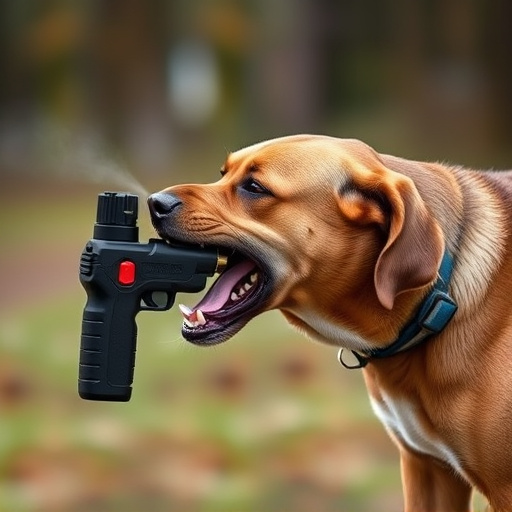Canine repellent spray uses capsaicin and natural ingredients to deter dog aggression, but for safety, it's crucial to wash pepper spray off a dog's fur after use. Follow product instructions, wear protective gear, and consider alternative methods like training, fencing, and natural repellents for holistic dog protection.
Protecting your dog from potential threats is paramount. One effective tool gaining traction is canine repellent spray, a powerful deterrent designed to keep dogs away from harmful situations. This comprehensive guide delves into the world of canine repellent spray, exploring its mechanics, safe application, and alternative strategies for enhancing your pet’s safety. Learn how to ensure your dog remains protected, with a special focus on understanding and removing pepper spray residue from their fur.
- Understanding Canine Repellent Spray: What It Is and How It Works
- Preparing and Using Canine Repellent Spray Safely on Your Dog
- Alternative Methods and Considerations for Dog Protection Beyond Pepper Spray
Understanding Canine Repellent Spray: What It Is and How It Works
Canine repellent spray, also known as dog repellant or pepper spray for dogs, is a specialized product designed to deter and protect against canine aggression. It’s not just another type of regular pepper spray; it’s formulated specifically considering a dog’s unique physiology and behavior. This spray typically contains capsaicin, the compound that gives chili peppers their heat, along with other natural ingredients. When sprayed onto a dog’s fur or skin, capsaicin irritates the animal’s eyes, nose, and throat, temporarily disorienting them and triggering an instinctive response to avoid the area.
The key to effective canine repellent spray lies in its swift application and thorough washing off after use. It’s crucial to wash pepper spray off a dog’s fur immediately to prevent any potential irritation or discomfort. This process ensures that the spray doesn’t build up on the dog’s coat, which could lead to skin irritation over time. Owners should follow the product’s instructions carefully regarding spraying distance, frequency, and subsequent cleaning to ensure maximum protection for both the canine companion and the user.
Preparing and Using Canine Repellent Spray Safely on Your Dog
When preparing and using canine repellent spray, safety is paramount. Always ensure the spray is specifically designed for dog use and check with your veterinarian to confirm its effectiveness and safety for your pet’s unique needs. Before application, thoroughly wash your hands and don protective gear, such as gloves, to avoid direct contact with the spray.
To apply the repellent safely, start by brushing your dog gently to remove any tangles or mats in their fur. This not only ensures even distribution of the spray but also creates a calm environment for the process. Next, hold the spray bottle upright and 10-15 centimetres away from your dog’s coat. Spray a light, even layer over the areas prone to barking or aggression, such as the chest, neck, and legs. Wash pepper spray off your dog’s fur immediately after use with warm water and a mild shampoo to ensure their comfort and remove any potential irritants.
Alternative Methods and Considerations for Dog Protection Beyond Pepper Spray
While pepper spray is a popular and effective option for dog deterrents, there are several alternative methods to consider when it comes to protecting yourself and your pets from canine aggression. One crucial aspect often overlooked is the thorough washing of pepper spray off a dog’s fur after use. It’s essential to ensure that no residual spray remains, as it could cause discomfort or even health issues for the animal.
Additionally, training plays a vital role in managing dog behavior. Teaching basic commands and positive reinforcement techniques can foster a well-behaved pet less likely to pose a threat. Other considerations include creating physical barriers, such as fencing, to restrict access to certain areas, and using natural repellents like citronella or specific scents that dogs find unpleasant but humans generally tolerate. These alternative methods offer a more holistic approach to dog protection, addressing not just the immediate deterrence but also long-term behavior modification.
Canine repellent spray can be a valuable tool for personal protection, but responsible use and thorough cleaning are paramount. After each outing, remember to wash pepper spray off your dog’s fur to avoid irritation or discomfort. While this method offers immediate defense, exploring alternative protections like trained deterrents or protective gear can provide longer-lasting solutions. Balancing these options ensures a comprehensive approach to canine protection, both for you and your pet.
